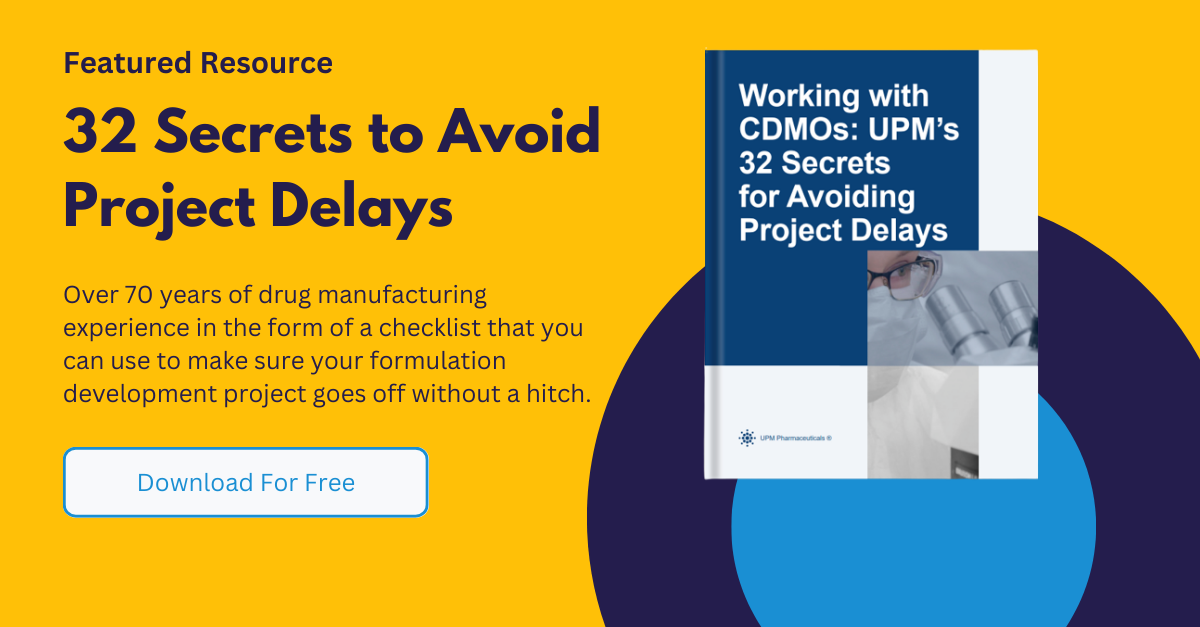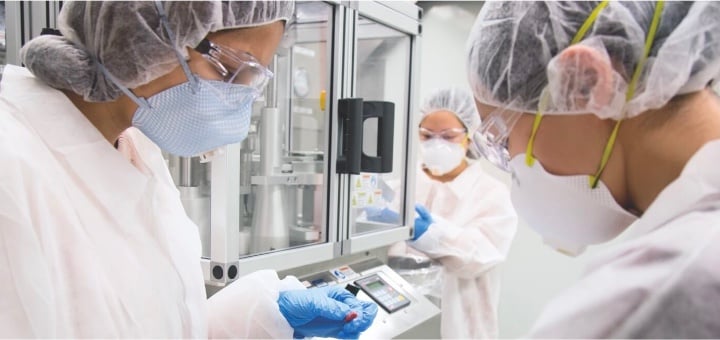Sustained release refers to a pharmaceutical formulation designed to release the active ingredient gradually and consistently over an extended period in the body. This controlled-release mechanism allows for a prolonged therapeutic effect, reducing the frequency of dosing and improving patient compliance.
But what are the types of sustained release, and the benefits? Keep reading to learn more.
- Types of Sustained Release Medications
-
Adverse Effects Associated With Sustained-Release Medications
Sustained-release medication delivery systems remain as popular dosage forms because of their ability to provide a continuous release of drugs, while minimizing the risk of side effects. These dosage forms are particularly useful for drugs with short half-lives as it ensures that the active ingredient remains in the body for an extended period.
The production of sustained-release dosage forms involves several factors, including the physicochemical properties of the API, route of administration, formulation, and processing. The use of sustained-release medications helps improve patient outcomes by providing a consistent level of medication over time while reducing adverse reactions.
The actives used in sustained-release formulations are formulated to be released at a constant rate over time. There are a number of processes used for producing sustained-release solid oral dosage forms such as matrix formulations, encapsulated mini-tablets or granulations, and coated tablets.
In this article, we will discuss types of sustained-release medications along with their benefits and potential adverse effects associated with them - all aimed at facilitating informed decisions around healthcare choices concerning these products.
Key Takeaways
- Sustained-release drug delivery system provides a drug at a constant rate with the least possible side effects and is ideal for drugs with half-lives of 3-4 hours.
- Methods of sustained release include a matrix of insoluble materials, micro-encapsulation, and biocompatible polymeric material.
- Tablets are produced on a high-quality tablet press and put through a range of physical and chemical tests to assess potential behavior inside the body.
- SR delivery systems are formulated to deliver drugs at a constant rate over time. They are especially suitable for chronic conditions, where reduced dosing can help with patient compliance.
Types of Sustained Release Medications
Sustained-release medications are designed to provide prolonged periods of drug delivery with minimum side effects. They are available in various formulations, including extended-release tablets and capsules, transdermal patches, and oral dosage forms.
These formulations use different technologies such as biocompatible polymers and micro-encapsulation to deliver the active ingredient at a constant rate over an extended period of time.
Prolonged Periods
Extended periods of drug release can be achieved through the use of matrix materials or micro-encapsulation, both of which rely on the controlled diffusion of active pharmaceutical ingredients (API) from a solid dosage form.
Matrix materials are insoluble compounds that are mixed with API to create a tablet.
The rate and duration of drug release are determined by the solubility and permeability properties of the matrix material.
Micro-encapsulation involves coating an inner core containing API with layers of insoluble compounds, resulting in slow and steady release over time.
The biocompatible polymeric material is commonly used for micro-encapsulation as it is biodegradable and non-toxic.
Sustained release formulations allow for prolonged periods between daily doses while maintaining a constant drug concentration in plasma.
This approach improves patient compliance and reduces side effects associated with multiple dosing regimens.
Oral dosage forms are most commonly used for sustained-release technologies due to their ease of administration and low cost compared to other delivery routes such as injectables or transdermal patches.
Overall, sustained-release technology is an important tool in pharmaceutical development, allowing for improved patient outcomes through optimal drug delivery systems that balance efficacy with minimal side effects.
Benefits of Sustained-Release Medications
Sustained-release medications offer several benefits over immediate-release formulations. These include the ability to maintain a constant rate of drug delivery, resulting in a more consistent drug concentration in the body.
This also allows for reduced frequency of dosing and avoids peak and trough concentrations, which can be associated with adverse effects or decreased efficacy.
Overall, sustained-release medications provide a valuable option for treating chronic conditions and improving patient outcomes.
1. Constant Rate of Drug Delivery
Achieving a consistent and steady release of medication is akin to maintaining a smooth and constant flow, requiring careful consideration of various factors such as physicochemical properties, route of administration, type of delivery system, formulation, and process.
Sustained-release medications are designed to provide a constant delivery of drugs over time, with the ideal outcome being a constant rate regardless of concentration. This allows for less frequent dosing while still achieving therapeutic concentrations and minimizing side effects.
To achieve this constant rate of drug delivery in sustained-release tablets, several methods can be employed. A matrix of insoluble materials such as acrylics or guar gum can be used to slow down the drug release rate. Micro-encapsulation involves coating the active pharmaceutical ingredient (API) around an inner core and covering it with layers of insoluble compounds.
By carefully selecting the appropriate method for drug delivery based on the physicochemical properties and other factors mentioned earlier, sustained-release medications can provide the controlled-release medication with fewer dosing requirements.
2. Constant Drug Concentration
Maintaining a constant drug concentration is crucial for effective therapy and minimizing adverse effects. Sustained-release medications, such as sustained-release tablets are designed to release the drug over an extended period, providing a steady and controlled dose to the patient.
These dosage forms allow for prolonged periods of medication without the need for multiple daily doses. Sustained-release formulations work by using various methods to control and slow down the rate of drug release. These can include incorporating insoluble materials into a matrix or micro-encapsulation with layers of insoluble compounds.
3. Reduced Frequency of Dosing
One of the benefits of reduced frequency dosing is the potential to improve patient adherence to medication regimens. This is particularly important for sustained-release medications, also known as extended-release medications, which are designed to provide a constant drug concentration over prolonged periods.
Patients with chronic diseases often require daily doses of medication, and reducing the frequency of dosing can significantly improve their quality of life.
Reduced frequency dosing can also have economic benefits. By reducing the number of doses required per day, patients may need to purchase fewer pills or refills, leading to lower overall costs.
Additionally, fewer doses may reduce the amount of time medical professionals spend monitoring and administering medication. However, it is important to note that not all medications can be safely administered in extended-release form or at reduced frequencies.
4. Avoidance of Peak and Trough Concentrations
To minimize the risk of adverse effects and ensure optimal therapeutic outcomes, avoiding peak and trough concentrations is a crucial consideration in drug delivery systems. Peak concentrations occur when the maximum concentration of a drug is reached after administration, while trough concentrations are the lowest concentration reached before the next dose. These fluctuations can lead to adverse effects or inadequate therapeutic responses. Sustained release technology offers an extended period of constant level drug release, avoiding peak and trough blood concentrations that can occur with immediate-release formulations.
Sustained-release tablets, controlled-release tablet coatings, and time-release formulations are examples of sustained-release technology used to achieve this goal. The table below illustrates the differences between immediate-release (IR) and sustained-release (SR) formulations in terms of their onset, duration, dosing frequency, and potential for fluctuation in blood levels.
|
Onset |
Duration |
Dosing Frequency |
Potential for Fluctuations |
|
|
IR |
Rapid |
Short |
Frequent |
High |
|
SR |
Slow |
Prolonged |
Infrequent |
Low |
By providing a more steady-state concentration over time through sustained-release technology, patients may experience fewer side effects while achieving better therapeutic outcomes. Furthermore, these formulations may reduce patient non-adherence due to less frequent dosing requirements compared to immediate-release medications.
Adverse Effects Associated with Sustained-Release Medications
Adverse effects associated with sustained-release medications can be a concern, as the prolonged release of medication can increase the risk of toxicity and incomplete absorption in some patients. The extended period over which medication is released into the body can lead to high blood concentrations that may cause adverse effects such as nausea, vomiting, dizziness, and headaches. Incomplete absorption due to gastrointestinal motility issues or damage to the pill or capsule also increases the likelihood of adverse effects.
Pharmacists also play an essential role in medication safety by providing education about potential adverse effects and monitoring patients for any signs of toxicity. Additionally, regular blood level assessments can help detect early signs of adverse effects associated with sustained-release medications.
With proper monitoring and the use of medication safety tools, the benefits of sustained-release medications can outweigh their potential risks.
Download Now: 32 Secrets to Avoid Project Delays [Free eBook]
CONTACT US
Partner with a Qualified CDMO: UPM Pharmaceuticals
Bringing a new drug to market is a lengthy, costly, and risky journey, compounded with the time pressure of being first in the marketplace. UPM is unlike other CDMOs because we are a large pharma supplier and an independent, family-owned CDMO, allowing us greater flexibility in our partnerships. To this point, our ended-to-end CDMO services have helped bring over 80 pharma products to market.
Our state-of-the-art seven-acre pharmaceutical campus features our commercial manufacturing and packaging site, commercial warehouse, and DEA-Approved vault. With extensive pharmaceutical industry experience and a solid track record of bringing drug products to market, our capabilities are the best that commercial pharma has to offer. Contact UPM to learn more about our contract development and manufacturing organization and how we can optimize your pharmaceutical project results.
Connect with Our CDMO Services

